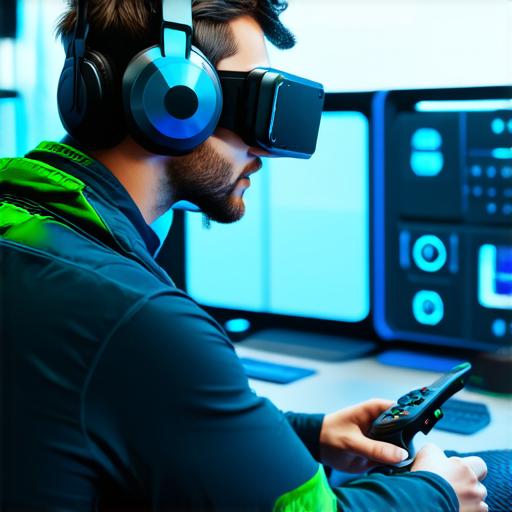
How do you make use of virtual reality?
What is Virtual Reality?
Virtual reality (VR) is an immersive computing technology that simulates a 3D environment in which a person can interact in a seemingly real or physical way. It uses sensors, cameras, and other devices to track the movements of the user and create a realistic experience that engages their senses. VR has been used in various industries such as gaming, education, healthcare, and more.

Benefits of Virtual Reality for Developers
There are several benefits of using virtual reality for developers. Firstly, VR allows you to create highly immersive experiences that engage users on a deeper level. This can lead to increased engagement, improved retention rates, and higher conversion rates. Additionally, VR offers the ability to create interactive experiences that were previously impossible or extremely difficult to achieve in traditional mediums.
Case Studies: How Developers are Using Virtual Reality
Virtual reality has been used in various industries to create engaging and immersive experiences for users. One such example is the use of VR in education. Many universities and schools are using VR to provide students with interactive and immersive learning experiences that enhance their understanding of complex subjects. For example, students can use VR simulations to explore historical events or scientific concepts in a way that was previously impossible.
Another example of how developers are using VR is in the gaming industry. With the rise of VR headsets such as Oculus and HTC Vive, gamers can now experience games in a whole new way. Developers are creating highly immersive games that transport players into different worlds and allow them to interact with characters and objects in ways that were previously impossible.
For instance, VR has revolutionized the way people experience sports events such as basketball or football games. Users can now feel like they are a part of the game, making it more engaging and exciting than traditional mediums. Additionally, VR has been used to create educational experiences for children in the healthcare industry, where they can learn about human anatomy by virtually dissecting a human body.
How to Create Effective Virtual Reality Experiences
- Define your target audience: Before you start creating a VR experience, it is important to define your target audience. This will help you understand their needs and preferences and create an experience that resonates with them.
- Keep it simple: While VR offers endless possibilities for immersion, it is important to keep the user experience simple and easy to navigate. Avoid overwhelming users with too much information or complex controls.
- Use sound and motion effectively: Sound and motion are crucial elements of a VR experience. Use them effectively to enhance the immersion and create a sense of presence. For example, adding sound effects such as background music or ambient sounds can make the experience more realistic.
- Test and iterate: Test your VR experience with real users and gather feedback. Use this feedback to make improvements and iterate on your design. It is important to conduct user testing to ensure that the VR experience is enjoyable, easy to use, and provides value to the user.
- Be mindful of motion sickness: Motion sickness can be a significant issue in VR experiences, particularly for users who are prone to it. To minimize motion sickness, developers should limit sudden changes in movement and provide users with control over their environment.
- Provide clear instructions: It is important to provide clear instructions for users on how to navigate the VR experience. This will help reduce confusion and ensure that users can quickly and easily understand how to use the experience.
- Make it accessible: Finally, developers should consider making their VR experiences accessible to as many people as possible. This may involve providing alternative input methods for users with disabilities or designing the experience to be compatible with a range of devices and platforms.
Conclusion
Virtual reality is a powerful tool for developers that offers endless possibilities for creating engaging and immersive experiences. By understanding the benefits of VR, using case studies as inspiration, and following best practices for creating effective VR experiences, you can make the most of this technology and drive engagement for your users. Remember to keep it simple, use sound and motion effectively, test and iterate, be mindful of motion sickness, provide clear instructions, and make it accessible. With these tips in mind, you can create a VR experience that is both engaging and enjoyable for your users.


